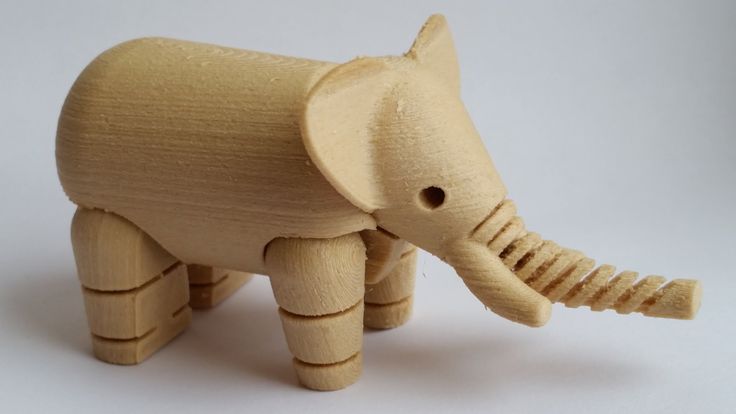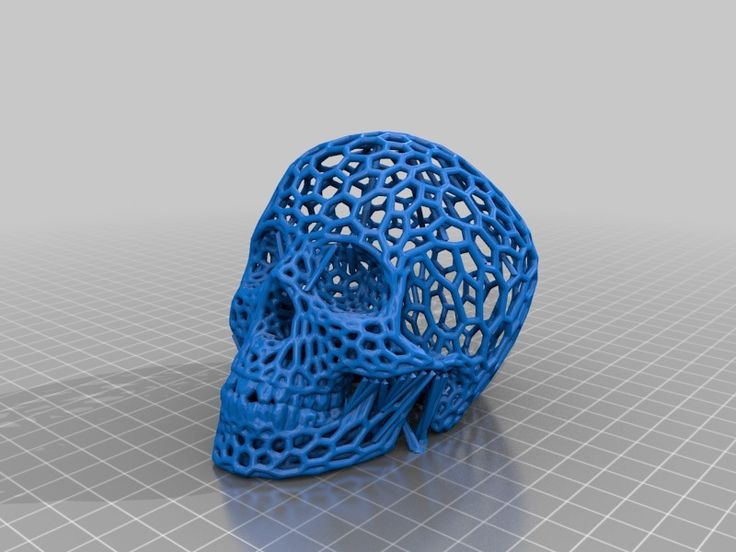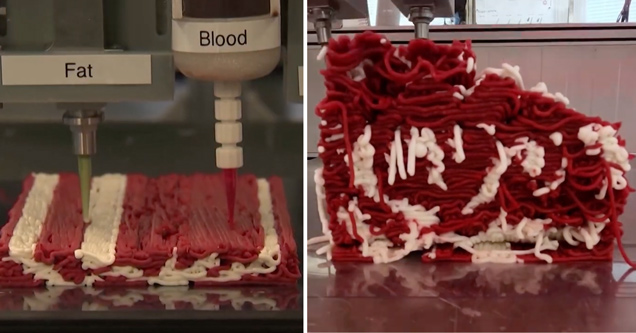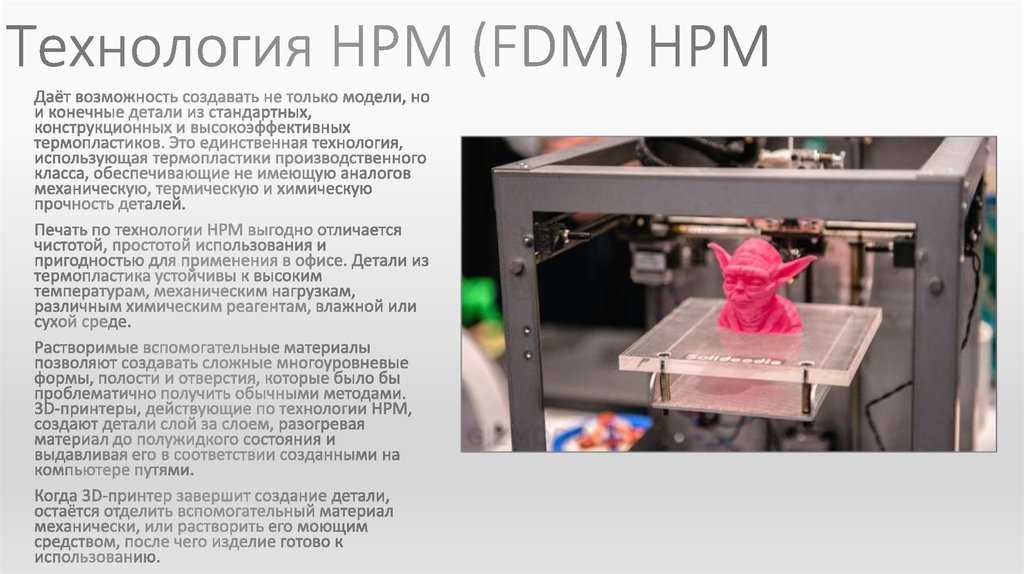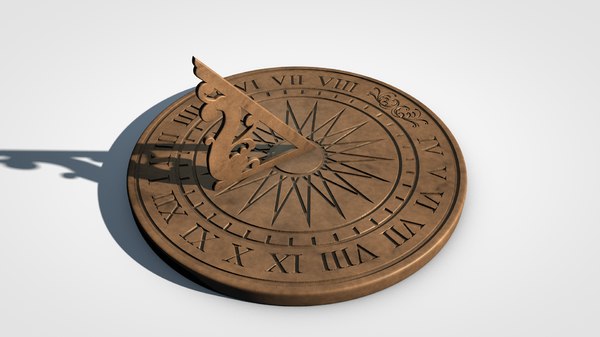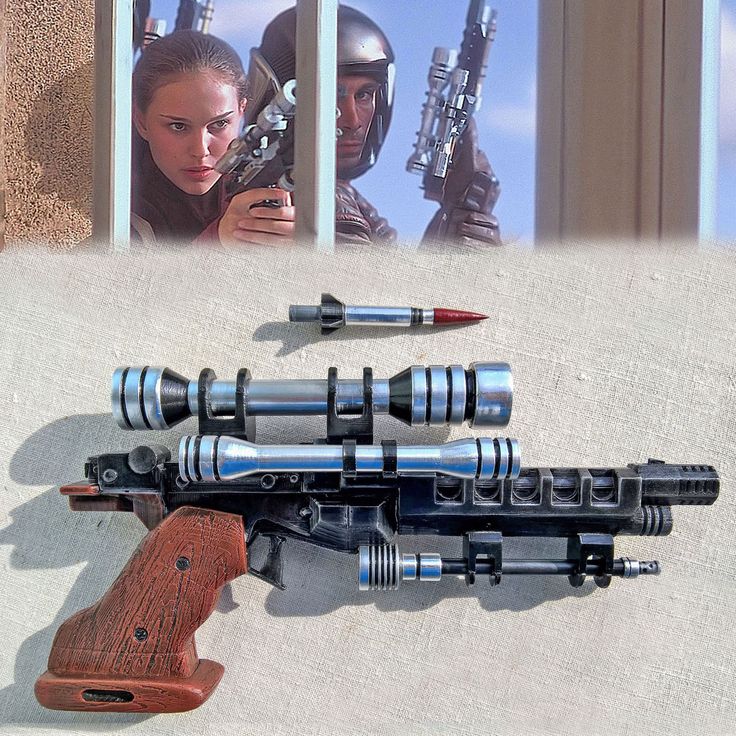3D print in wood
Ultimate Materials Guide - 3D Printing with Wood Filament
Overview
Wood-based filaments are typically a composite that combines a PLA base material with wood dust, cork, and other powdered wood derivatives. Typically, the filament consists of around 30% wood particles, but the exact number may vary depending on the brand. The presence of these particles gives the 3D printed parts the aesthetics of real wood. This filament is also less abrasive compared to other composite filaments such as carbon-fiber filled and metal filled, since wood particles are much softer. There are some wood-like filaments on the market that only contain wood coloring, but no actual wood particles, so these typically have a very different look and feel. This guide will focus on wood infused PLA filaments since these are the most common, but you can use these tips as a starting point for other wood-based filaments as well.
- Wood-textured finish is aesthetically appealing
- Does not need any expensive wear resistant nozzles
- Aromatic and pleasant smelling
- Prone to stringing
- Smaller nozzles can end up with partial clogs over time
- May require a larger size nozzle
Hardware Requirements
Before 3D printing with wood filled filaments make sure your 3D printer meets the hardware requirements listed below to ensure the best print quality.
Bed
Temperature: 45-60 °C
Heated Bed Optional
Enclosure Not Required
Build Surface
Painter’s Tape
Glue Stick
Glass Plate
PEI
Extruder
Temperature: 190-220 °C
No special hotend required
Cooling
Part Cooling Fan Required
Best Practices
These tips will help you reduce the chances of common 3D printing issues associated with wood filaments such as clogging, oozing, and stringing.
Use Larger Nozzle Sizes
Due to the added wood particles in this plastic, standard 0.35 or 0.4mm nozzles can be challenging. The particles have a tendency to clump near the nozzle orifice, causing inconsistent extrusion or partial clogs. We recommend using a 0.5mm or larger diameter nozzle, as this significantly reduces the chances of clogging. It may also be a good idea to clear your nozzle regularly to remove any partial clumps that may have formed within the nozzle.
Fine Tune Your Retraction Settings
Optimizing the retractions for wood filaments can be challenging.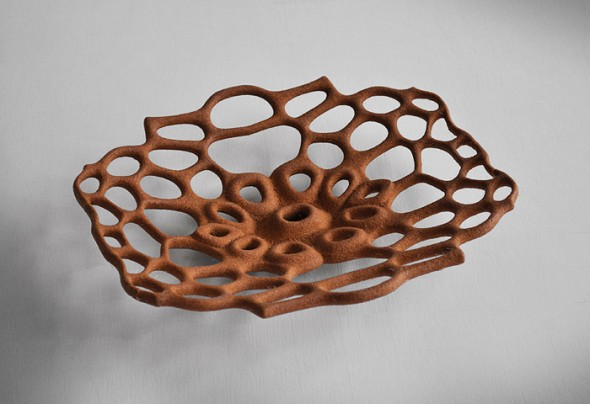 The wood particles in the plastic can interfere with the nozzle’s ability to maintain the suction pressure after a retraction. This means that the nozzle may ooze more than normal at the start and end of each printing segment. Simplify3D includes a unique feature called Coasting, which can be very useful for these situations. Coasting will automatically reduce the pressure in the nozzle as the extruder approaching the end of a printing segment. This way, when it needs to retract and move to the next location, there is far less pressure to deal with. This can significantly improve the surface finish of your models by removing the blobs at the end of a segment. You can also try using a negative value for the “extra restart distance” setting on the Extruders tab of your process settings. For example, a value of -0.1 or -0.2mm can help account for the extra oozing that takes place due to the wood particles. For more tips on how to combat blobs and optimize your retraction settings, please refer to our Print Quality Guide, which contains an entire section devoted to this issue: How to Reduce Blobs and Zits.
The wood particles in the plastic can interfere with the nozzle’s ability to maintain the suction pressure after a retraction. This means that the nozzle may ooze more than normal at the start and end of each printing segment. Simplify3D includes a unique feature called Coasting, which can be very useful for these situations. Coasting will automatically reduce the pressure in the nozzle as the extruder approaching the end of a printing segment. This way, when it needs to retract and move to the next location, there is far less pressure to deal with. This can significantly improve the surface finish of your models by removing the blobs at the end of a segment. You can also try using a negative value for the “extra restart distance” setting on the Extruders tab of your process settings. For example, a value of -0.1 or -0.2mm can help account for the extra oozing that takes place due to the wood particles. For more tips on how to combat blobs and optimize your retraction settings, please refer to our Print Quality Guide, which contains an entire section devoted to this issue: How to Reduce Blobs and Zits.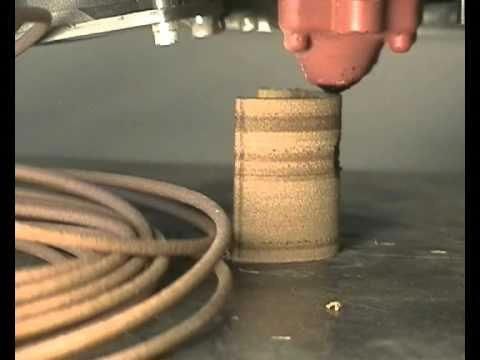
Minimize Stringing and Oozing
The wood particles in this material make it very difficult to maintain proper suction in the nozzle when moving between two locations. This frequently leads to oozing or stringing while printing. Thankfully, Simplify3D includes a feature that was designed for this exact purpose. If you go to the Advanced tab of your process settings, you can enable the “avoid crossing outline for travel movements” option. With this option enabled, the software will try to move within the interior of your model as much as possible. So instead of moving in a straight line from point A to B, it will chart an alternate route that keeps the extruder over top of the model to avoid stringing and oozing. This can frequently reduce the exterior movements by over 50% and can greatly improve your print quality.
Pro-Tips
- With certain wood filaments, using different extruder temperatures will produce slightly different colors for the final printed part.
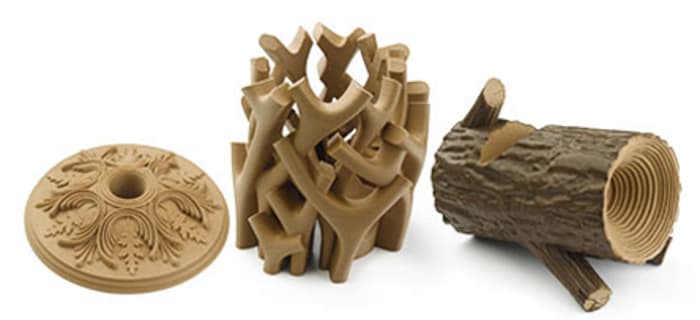
Using this effect, you can setup different temperatures for different layers of your print in Simplify3D to create a realistic grain pattern on the surface of the printed part. - Wood filaments are very good at hiding the layer lines between different layers of your print. For simple shapes, you can likely print with a much larger layer height, since the lines between layers will be less visible.
- Many wood-based filaments can be easily post-processed using standard wood sand paper. This can further smooth and refine the surface finish of your prints.
Get Started with Wood Filled Filaments
Now that you’ve learned the basics for this material, here are some ideas to help you tackle your first project. We’ve included sample applications, a few projects you try, and popular filament brands we see from our customers.
Common Applications
- Household decorations
- Cosplay props
- Toys
Sample Projects
- Tree Stump Pencil Holder
- Frankenstein Switch Plate
- Wand
- Baby Groot
Popular Brands
- ColorFabb WoodFill, BambooFill, CorkFill
- Fillamentum Timberfill
- Hatchbox Woodfill
- FormFutura EasyWood
- Polymaker PolyWood
New wood 3D printing material could be used to create self-assembling flat-pack furniture
0Shares
Researchers at the Hebrew University of Jerusalem have developed a novel wood-based 3D printing material that can morph into pre-designed shapes.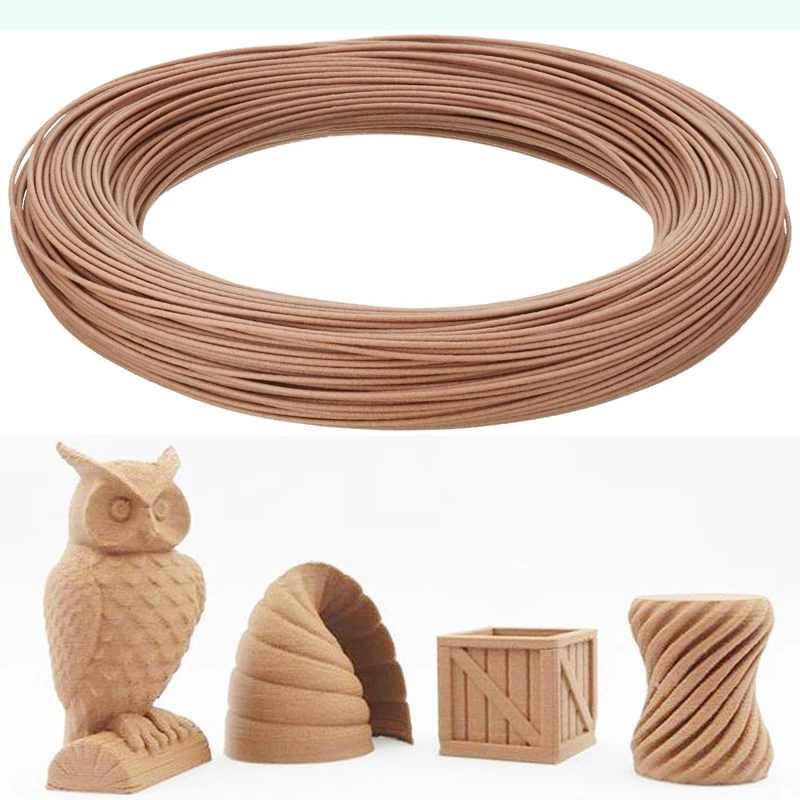
Made from a mixture of wood flour and plant extracts, the eco-friendly feedstock is able to shapeshift due to the fiber orientations in its wood content, which cause it to warp as it dries. While the team developed their material a few years ago, they recently discovered that by controlling the way it’s laid down, they could time how its moisture content evaporates, in a way that allows it to form complex objects.
Thus far, the scientists have 3D printed their wood-infused ink into saddle, dome and helix-shaped models, but with further development, they say it could be used to create more intricate self-assembling objects such as household furniture.
Wood’s unique morphing potential
In the natural world, it’s well known that certain species of plant and animal life can change shape, appearance or even texture.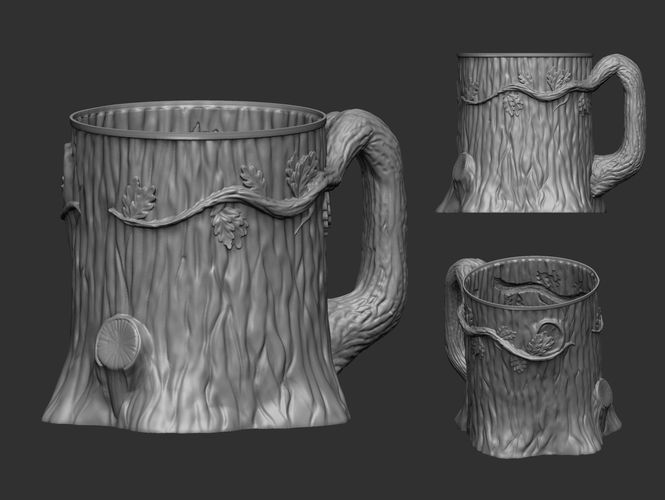 When it comes to wood, this capability comes from the orientations of its fibers, which cause it to shrink unevenly and warp, as seen in cut down trees. However, warpage may be viewed in 3D printing as a problem that needs dealing with, but the team are now approaching it differently.
When it comes to wood, this capability comes from the orientations of its fibers, which cause it to shrink unevenly and warp, as seen in cut down trees. However, warpage may be viewed in 3D printing as a problem that needs dealing with, but the team are now approaching it differently.
“Warping can be an obstacle,” explains Doron Kam, a graduate student who recently unveiled the Hebrew University of Jerusalem’s material breakthrough at a meeting of the American Chemical Society (ACS). “But we thought we could try to understand this phenomenon and harness it into a desirable morphing.”
While artificial structures don’t generally have the ability to change shape by themselves, scientists have increasingly investigated the potential of materials that can morph when triggered by thermal, pH or moisture stimuli. That said, the Israel-based team claims that research in this area is often limited to the 3D printing of flat sheets from gels and elastomers, which are synthetic by nature.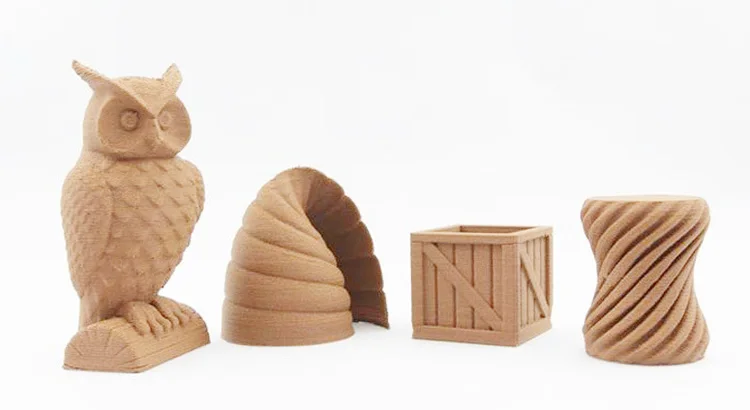
A future 3D printing rival to IKEA?
In an attempt to harness wood’s natural shapeshifting capabilities, the researchers have now integrated it into a material composed of water as well as cellulose nanocrystals and xyloglucan, natural binders extracted from plants. Essentially, the team has found that the behavior of this feedstock can be precisely controlled by adjusting the speed and print path of the printhead used to deposit it.
Specifically, it was discovered that any shrinkage was perpendicular to the wooden fibers in the ink, and adjusting the speed of its deposition could change the way these fibers are aligned. As a result, accelerating the printing process enables the scientists’ material to warp in a predictable fashion, while depositing it slowly causes its wood content to become randomly oriented, and shrink in all directions.
During testing, it has already proven possible to stack two rectangular layers of the feedstock into a helix with different orientations, while adjusting its warpage to control the direction in which it spirals. One day, the team anticipate that their material could be used to 3D print furniture items such as chairs in a flat-packed fashion, which later turn into the products customers ordered upon opening.
One day, the team anticipate that their material could be used to 3D print furniture items such as chairs in a flat-packed fashion, which later turn into the products customers ordered upon opening.
In the near-term, the Israeli Ministry of Science, Technology and Space-backed project is focusing on the potential of making the morphing process reversible. This work will see the researchers develop a means of getting their material to respond to environmental factors such as humidity, which could eventually be used to make it return to its original form.
Wood products 3D printed by Forust. Photo via Forust.Advancing wood’s 3D printing viability
While the Israeli team’s shapeshifting discovery is no doubt innovative, their efforts are the latest in a long line of attempts to develop a usable wood-based 3D printing material. In March 2021, it was also predicted that an MIT-developed lab-grown wood would one day be deployed in the 3D printing of eco-friendly furniture.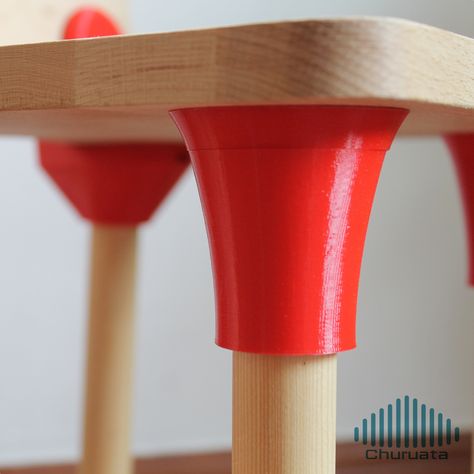
Similarly, an eco-friendly wood 3D printing material which emerged at the University of Freiburg a few months earlier, has shown potential for use within construction or light industrial applications. Composed of lignin mixed with cellulose balls, the team’s biosynthetic polymer is said to be compatible with both Direct Ink Writing (DIW) and Fused Deposition Modeling (FDM) 3D printers.
On the commercial front, meanwhile, Desktop Metal has moved into this space via the launch of its Forust wood 3D printing brand. Using a material made from sawdust, lignin and a bio-epoxy resin, the firm now binder jet 3D prints decor and luxury architectural products that clientele can buy online. The company also markets the process as a service, for those seeking batch-made wooden parts.
To stay up to date with the latest 3D printing news, don’t forget to subscribe to the 3D Printing Industry newsletter or follow us on Twitter or liking our page on Facebook.
While you’re here, why not subscribe to our Youtube channel? featuring discussion, debriefs, video shorts and webinar replays.
Are you looking for a job in the additive manufacturing industry? Visit 3D Printing Jobs for a selection of roles in the industry.
Featured image shows one of the researchers’ helical prototypes. Photo via Doron Kam, the Hebrew University of Jerusalem.
Tags American Chemical Society Desktop Metal Doron Kam Forust Hebrew University of Jerusalem Massachusetts Institute of Technology University of Freiburg
Paul Hanaphy
Paul is a history and journalism graduate with a passion for finding the latest scoop in technology news.
3d wood printing on a 3d printer
Varieties of 3D wood printers: ideas for making money
Wood remains one of the most popular craft materials in various fields of human activity.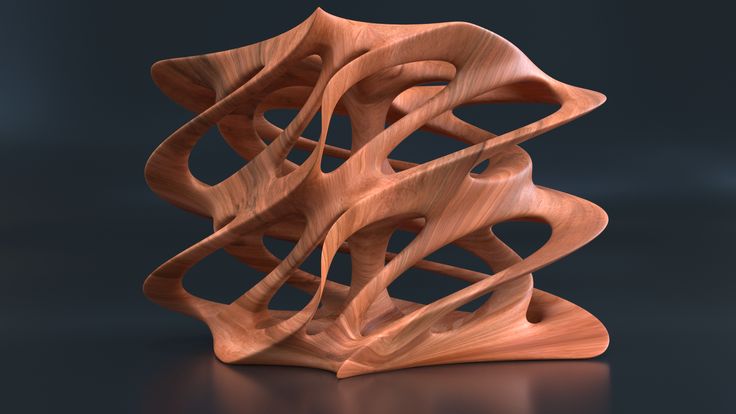 Modern processing devices expand the possibilities of creating wooden masterpieces. One of their best representatives is the wood printer, which deserves special attention.
Modern processing devices expand the possibilities of creating wooden masterpieces. One of their best representatives is the wood printer, which deserves special attention.
3D wood printer: what is it?
The wood printer is an electronic device capable of transferring any image directly onto a wood surface from a computer without intermediate steps. Modern models can form a relief pattern, but are not intended for the manufacture of three-dimensional products. In fact, this device is designed to replace expensive hand-painting or woodcarving, while providing high image quality.
When printing with a printer, the composition (ink) penetrates into the surface fibers of the wood, which securely fixes the pattern on the material and increases its durability. A colorful image can be preserved for a long time without fading and without losing color. nine0003
3D wood printer capabilities
Wood printers are designed for printing images on solid wood, plywood, chipboard, fiberboard, MDF, furniture boards and other wood materials. By applying various design solutions, you can unrecognizably transform the interior of a residential or office space, shopping and exhibition halls, beauty salons and restaurants. Prints on furniture fronts turn standard items into exclusive pieces. With their help, highly artistic panels and billboards are created. nine0003
By applying various design solutions, you can unrecognizably transform the interior of a residential or office space, shopping and exhibition halls, beauty salons and restaurants. Prints on furniture fronts turn standard items into exclusive pieces. With their help, highly artistic panels and billboards are created. nine0003
A special effect is provided by 3D printers, which are capable of applying any images and multi-color coatings to three-dimensional figures of any complexity. You can provide a special decor not only, for example, on the countertop, but also on the legs of tables, the backs of chairs. This ability expands the possibility of manufacturing exhibition and advertising products. Using printers, you can create a relief pattern by applying the composition in layers.
Which 3D printers are suitable for printing on wood, MDF, chipboard, solid wood and veneer? nine0007
There are different types of wood printers:
- Laser. A tinting powder is applied to the surface, which is sintered using a laser beam.

- Jet. A special paint is squeezed out onto a wooden surface with microdrops, which instantly hardens with slight heating.
- Sublimation printer. This is a high performance professional machine. It is much more expensive than the previous varieties, but provides the highest quality, allowing the production of printed products. nine0028
The choice of equipment is made on the basis of the intended use, i.e. a realistic assessment of the photographic accuracy of the image. The most important criteria: the size of the working area, resolution, performance, dimensions and cost.
What can it be used for?
The wood printer offers great opportunities for developing your own business. We can recommend the following decorating and design business ideas:
- cabinet fronts; nine0028
- table tops, chair seats and other pieces of furniture;
- original, exclusive elements for interior design;
- entrance and intermediate doors for residential and office premises;
- bar counters;
- ceiling and wall elements, partitions for room zoning, false panels;
- signboards, banners, posters, information stands and signs, various advertisements and information announcements;
- exhibition structures; nine0028
- various 3D figures, figurines, souvenirs;
- panels and paintings.
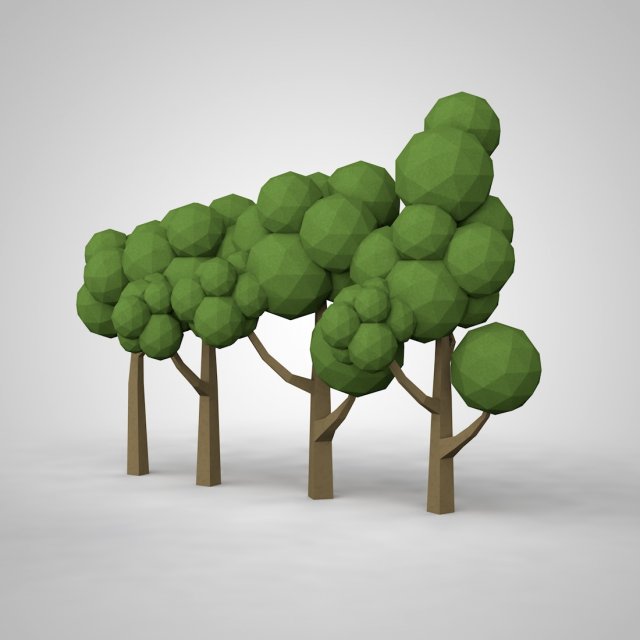
Woodcarving can be imitated with the printer. It is allowed to transfer any photographic image to a wooden surface. It creates the opportunity to qualitatively repeat the products of folk art, while maintaining a highly artistic style.
Natural wood will never go out of style in interior design. Wood printers empower designers and help create original products at home. It is important to choose the right reliable model and have the desire to express yourself in creativity. nine0003
- March 14, 2021
- 5845
Get expert advice
Massivit - a pioneer in large format 3D printing
Massivit specializes in 3D printing of large objects without restrictions on geometry complexity. Uses a unique gel that hardens under UV light.
The advent of 3D printing has created a steady boom in many industries, including healthcare, entertainment, fashion, and mass production. The technology has ushered in a new era in the design and prototyping, mockup or tooling processes, thanks in large part to the ability of any small or large 3D printer to produce complex geometries from digital models.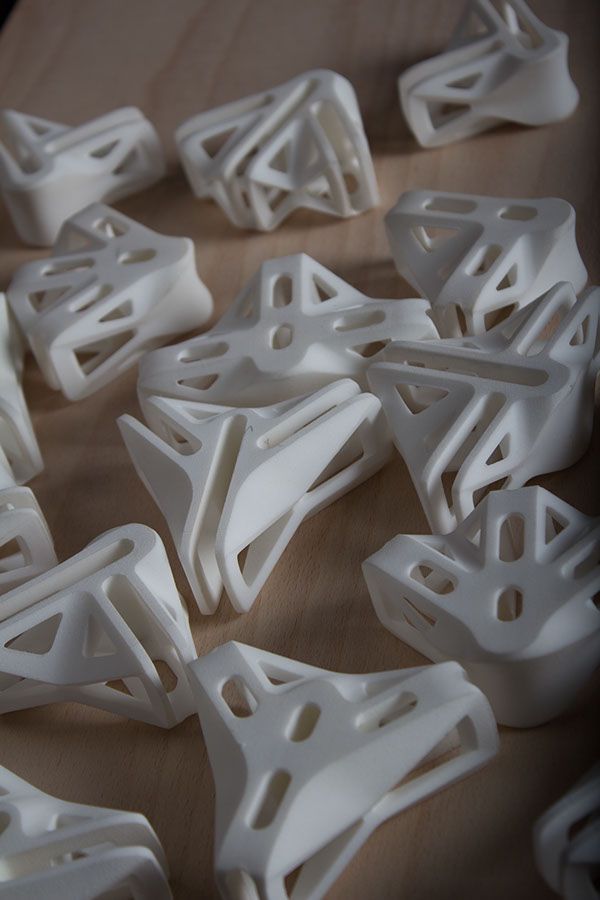 nine0003
nine0003
Massivit 3D Printing Technologies Ltd. is a leader in the development of large format 3D printing solutions in the scientific sector, in the fields of visual communications, entertainment, interior design, architecture.
Headquartered in Israel, founded in 2013 by a team of renowned industry experts, the company offers the global community a comprehensive service supported through an extensive dealer network. Using the patented Gel Dispense Printing (GDP) method, MASSIVIT enables fast and cost-effective production of models or parts. The innovation combines a high-speed additive manufacturing system, Dimengel's proprietary materials, and state-of-the-art preprint software. Dimengel is a photopolymer acrylic gel with several exclusive features that allow you to quickly create giant, hollow, durable objects. The company produces a unique polymer at its own factory in Israel. The main advantage of the material is its high viscosity, and its fluidity changes under ultraviolet exposure. nine0003
nine0003
These combined capabilities ultimately result in significant reductions in manufacturing time, labor and overall costs, while allowing for extensive geometry freedom. In addition, the technology allows the production of models of any size without restrictions, as large 3D printed parts can be easily joined together.
Achievements
Massivit was originally created to develop a completely new technology that allows you to work at a very high speed and produce objects of incredibly large dimensions. Both tasks were successfully solved. nine0003
Another significant achievement of the company is the ability to print hollow objects without supporting structures. Now Massivit does not waste time and material on printing supports, which has a positive impact on the productivity of the equipment.
Today the company uses two technologies. The first is Gel Dispensing Printing, which involves printing final objects that are immediately ready for use.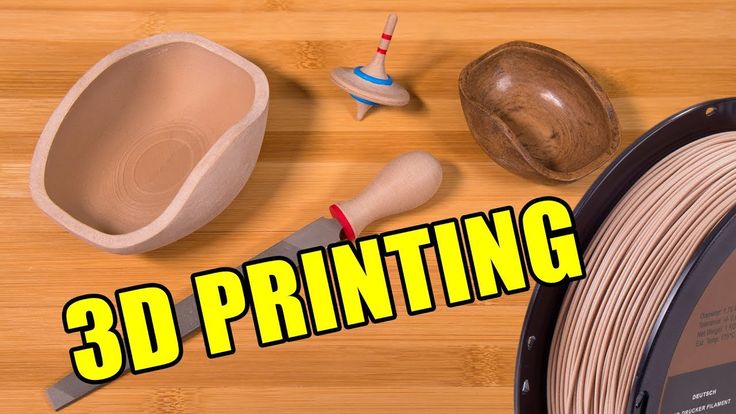 There are already 160-170 Massivit acrylic printers in operation around the world.
There are already 160-170 Massivit acrylic printers in operation around the world.
The second technology is Cast In Motion Technology. The CIM hybrid machine also prints with Massivit's signature gel. The first print head builds a plastic frame, and the second head following it pours another mixture (based on metal, wood, stone) into it. A fully printed object is placed in water, the plastic shell is destroyed, leaving the desired design.
Examples of manufactured products
Massivite does not limit its activities to any particular sector and cooperates with representatives of various industries. nine0003
The printing of forms for the production of products of complex configuration is most in demand. Making such instruments in the usual way is a very expensive and time-consuming undertaking. Printing stamps or forms allows you to significantly save time and money, and also does not have strict restrictions on geometry. The technology is used to produce parts or components for bicycles, cars, yachts and even trains.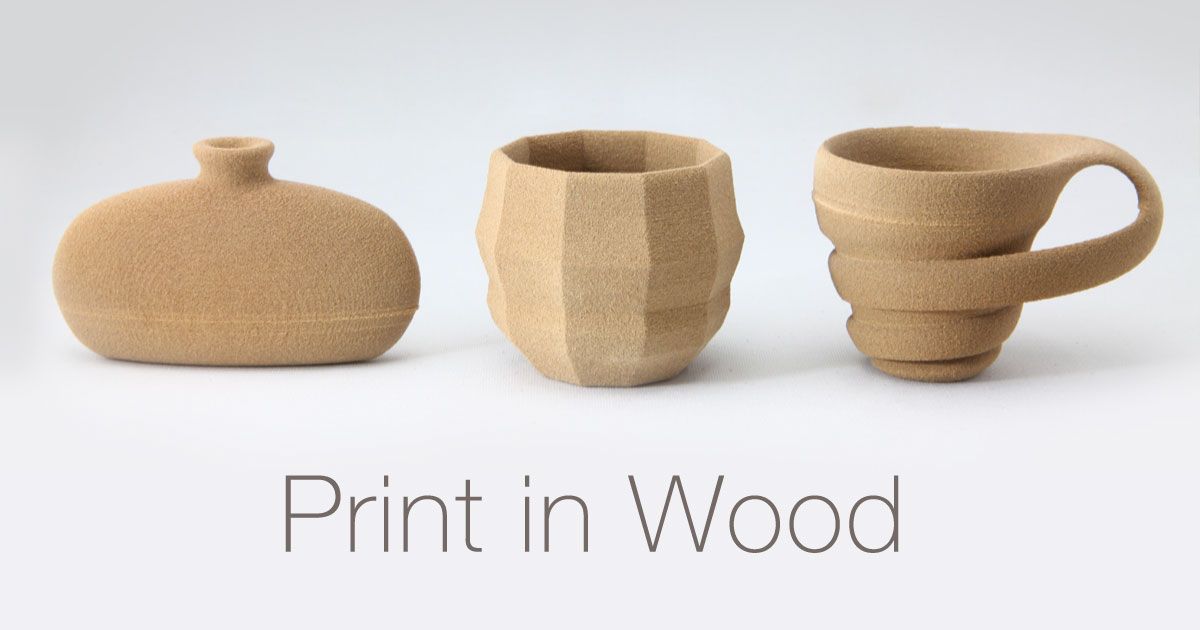
Another interesting direction is wood printing. Previously, two methods were used to create wooden objects - processing of natural wood or production from boards pressed from sawdust mixed with glue or resin. On a 3D printer, the same principle is used as for creating chipboard. The hybrid printer uses a specially prepared mixture of chips as the base material, and the output is a product that is identical to wood in terms of tactile sensations, sound and strength. An additional plus is that such a “wood” does not burn, does not swell from moisture, since refractory and waterproof additives based on chromium or aluminum are added to the mixture. Impurities prevent the spread of the flame, preventing it from flaring up. The existing fire safety standard does not require that the printed object does not burn out completely. For example, if a wooden element is used in the decoration of a room, it is necessary that it “hold out” for some time while people are evacuated. Also, such materials are safe for health and do not harm the environment.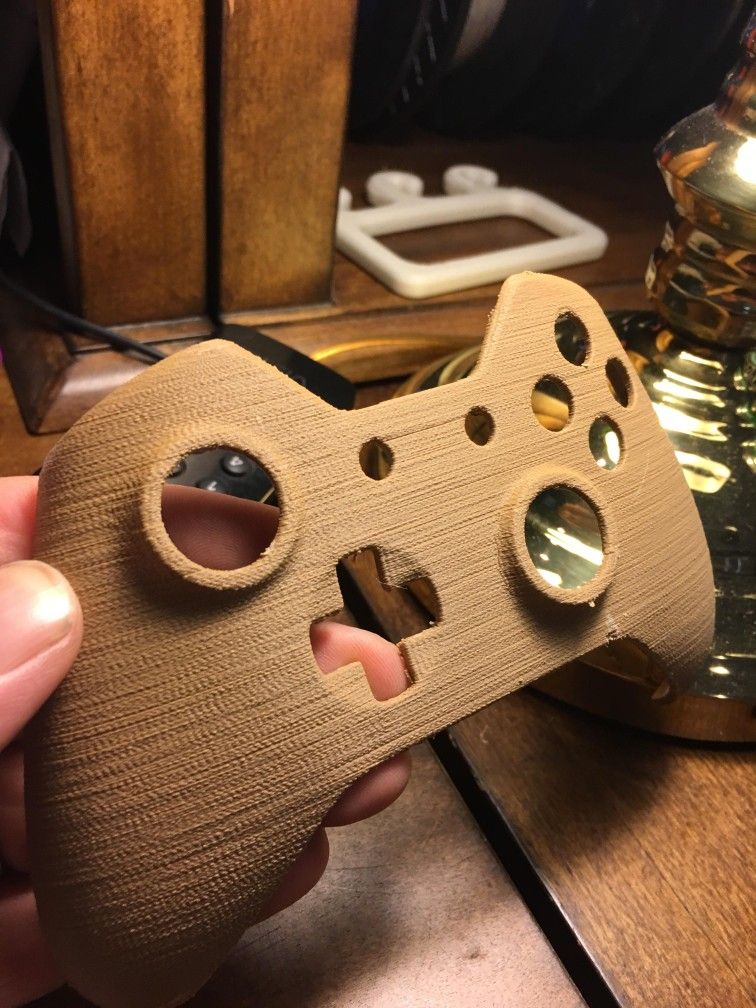 nine0003
nine0003
The following examples of Massivit products are a granite sink and a concrete vase. The hybrid technology makes it possible to obtain any shape and pour material into it, creating impact-resistant objects of large sizes and interesting colors.
Development prospects
Massivite is a company built on a rich heritage of industry innovation. The firm is rapidly expanding its large-format 3D printing capabilities across various industrial sectors.
The company is not going to rest on its laurels and continues to conduct research and test developments. The main areas in which Massivit plans to develop:
- automotive industry;
- production of sea vessels;
- railway industry;
- aerospace sector;
- architecture;
- energy.
A team of visionary co-founders and print innovators break new ground with revolutionary products and applications.